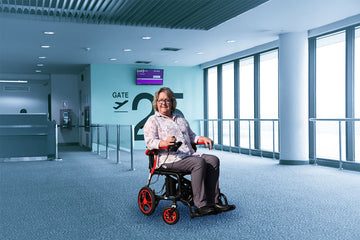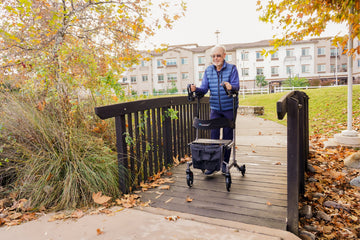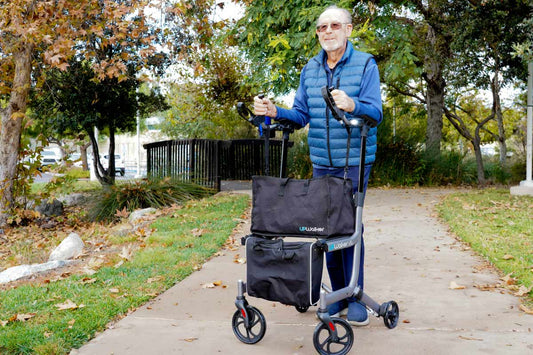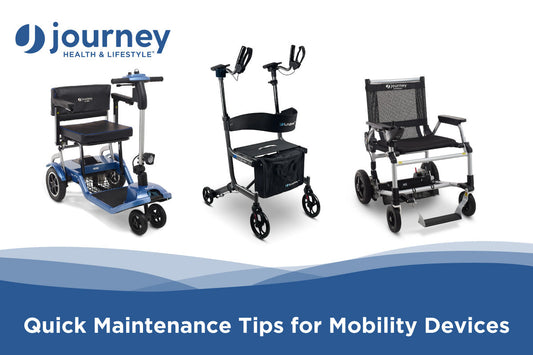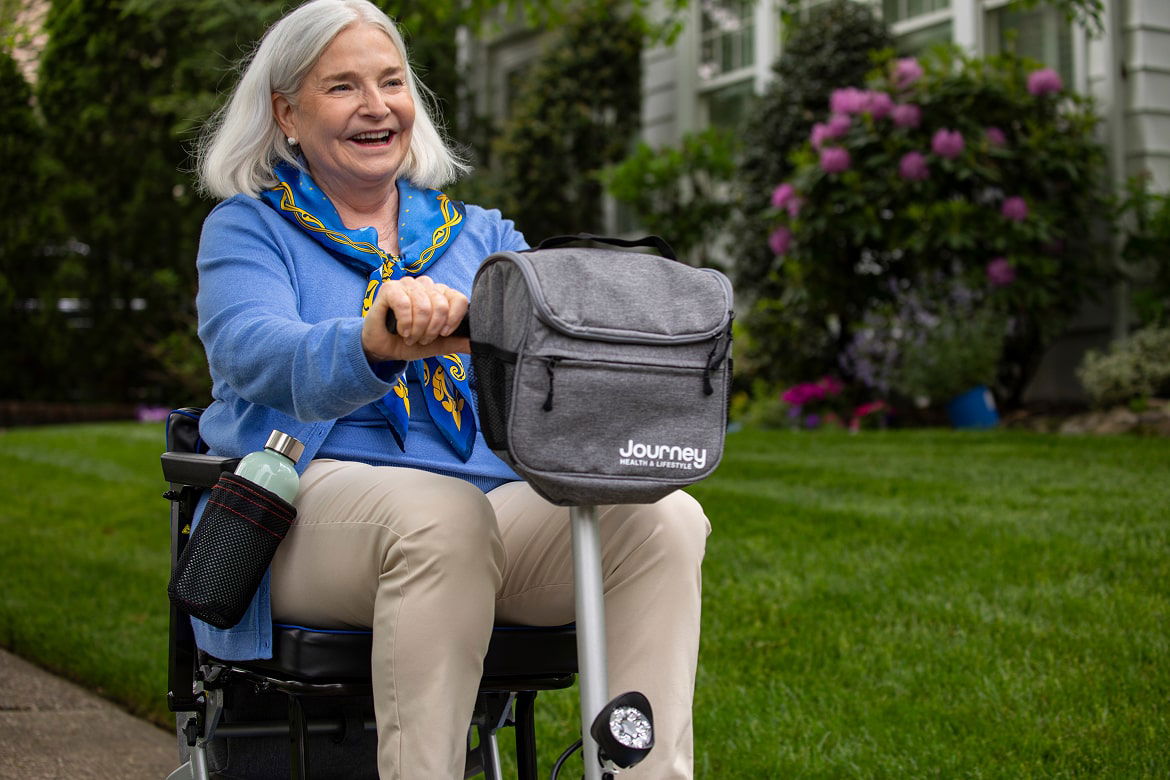M-F 9:30am - 7pm EST
Caretaker's Fatigue: How to Reduce Burnout and Get Support

More than 53 million unpaid caregivers provide support to loved ones who need assistance, from attending doctor’s appointments and preparing meals to helping with critical daily tasks like managing medications and paying bills.
According to CDC, these unpaid caregivers provide the equivalent of nearly $470 billion a year in care. One in five adults is a caregiver, with nearly a third of those adults providing care for at least 20 hours per week.
The demand for assistance is increasing as the United States population ages, but so are the strains on caregivers. Balancing caregiving and other responsibilities can quickly lead to burnout. Many caregivers struggle with their own health concerns and financial issues such as having to stop working or reducing hours to provide care for a loved one.
In other words, caregivers need support. Caregiver burnout is very common but learning how to manage stress and finding resources for additional support can help. Keep reading to learn more about what to do about caregiver burnout.
Understanding Caregiver Burnout
Caregiver burnout is physical, emotional, and mental exhaustion from caregiving responsibilities. Common symptoms include fatigue, irritability, anxiety, depression, resentment, withdrawal, and turning to unhealthy coping mechanisms.
Everyone experiences burnout differently. According to the Cleveland Clinic, caregiver burnout can cause a variety of feelings:
- Anxiety/fear
- Anger/frustration
- Denial
- Guilt
- Negativity
- Secluded or alone
Caregiver burnout occurs when you’re devoting most of your time, energy, and resources to taking care of others. When this happens, it’s common for caregivers to find that they neglect, forget, or are unable to care for themselves. Many caregivers don’t recognize burnout when it happens, which can impact the quality of care they provide.

Risk Factors for Caregiver Burnout
- Serving as a caregiver.
- Working in a job helping others, such as at a school or hospital.
- No support system to relieve you when you’re tired.
- Feeling as though you’re the only person who can do your job successfully.
Caregiving for a long period of time can particularly increase the risk of burnout. Delaying preventative checkups or treatment for chronic medical conditions due to caregiving responsibilities can lead to additional health concerns. Not treating mental health conditions like depression and anxiety reduces quality of life for both you and your loved one.
Why Caregivers Are at Risk
Caregiving is demanding. It requires a lot of time and emotional labor. It’s also a lot of responsibility, especially if you’re providing care for someone who needs help with daily tasks such as bathing and getting dressed.
Caregivers tend to neglect self-care and personal needs due to the demands of caregiving. It can also be challenging to seek help as a caregiver, whether because you feel like only you can provide the care needed or simply because you have a lack of time to find resources.
Physical symptoms like exhaustion, sleep issues, and frequent illness can be signs of burnout, as can emotional symptoms including sadness, frustration, and resentment. Behavioral symptoms like withdrawal, anger, and unhealthy habits are also common signs of burnout.
Strategies to Reduce Caregiver Fatigue
Caregiving is often stressful, but it can also be rewarding. Making time to take care of yourself as a caregiver is one of the best ways to prevent burnout and reduce caregiver fatigue. Here are a few strategies that can help:
Prioritize Self-Care: Make time to take care of yourself. Get enough sleep and exercise, eat well, drink plenty of water, and incorporate relaxing activities into your day. Taking a walk with your loved one or enjoying a healthy meal together can be a great way to care for both of you. Activities such as watching a favorite television show or working on a puzzle offer a way to relax that you can both enjoy.
Managing Your Workload: Prioritize tasks and delegate when possible. Can another family member or friend take over grocery shopping or another recurring task? Is someone able to assist with laundry or meal preparation? You may find that others are willing to assist and aren’t sure how to help, so be specific with your requests. Set realistic expectations for what you can achieve and consider which responsibilities need to be shifted or reprioritized.
Seek Support: Family, friends, support groups, and professional services are all great options. Just knowing you have a supportive community to lean on can help alleviate some of the seclusion and stresses of caregiving. Support groups for caregivers can be especially helpful because you’ll find that you’re not alone and it’s helpful to discuss what’s going on with others who truly understand how demanding caregiving can be.
Take Breaks: Regular breaks are important. Respite services can give you space to recharge. If possible, ask family or friends to help support your loved one so you can regularly participate in activities you enjoy, such as a favorite workout class or book club.
How to Ask for and Accept Help
It’s important to ask for and accept help with caregiving responsibilities. Talk to family and friends about your loved one’s needs and look for ways they can connect and assist with care. You may find that someone can drive your loved one to physical therapy or come over on a regular basis. Getting others involved in your loved one’s care also helps keep them more connected, energized, and engaged, so it’s a win-win-win – your friend or family gets to spend quality time with your loved one, your loved one gets support, and you get a break!
Organizations in your community may offer services like in-home care, adult day care, transportation, or community meal programs. Ask your loved one’s healthcare provider if they know of resources that might help.
Support groups are also a great way to find local resources. Your local Agency on Aging or chapter of the AARP can advise on services available in your area. There are also national organizations for certain conditions that assist caregivers and people diagnosed with specific conditions. These groups can share resources on topics like respite care and support groups.
Building a Support Network
The importance of building a strong support network can’t be overemphasized. There are many benefits to connecting with others who have similar caregiving situations. Finding a local or online caregiver support group can provide you with a sense of community and help you learn about ways to improve quality of life for you and your loved one, from meal recommendations to questions to ask at the next doctor’s appointment.
Healthcare providers are also an important part of your support network. Regular and clear communication about concerns and challenges can help them provide the best possible care.
When to Seek Professional Help
If your burnout is severe or leading to depression/anxiety, seek professional help. Mental health resources and counseling can help you cope with caregiver burnout and the numerous emotions you have as a caregiver. Talking to someone who is objective can help you process your feelings in a safe environment so you can take better care of yourself and your loved one.
You’re Not Alone
Caregiver burnout is common. Taking proactive steps for your own well-being, like eating well and staying active, can help you take care of yourself while also caring for your loved one. Ask for and accept help from others and find support groups and other resources to build a supportive community for you and your loved one.
